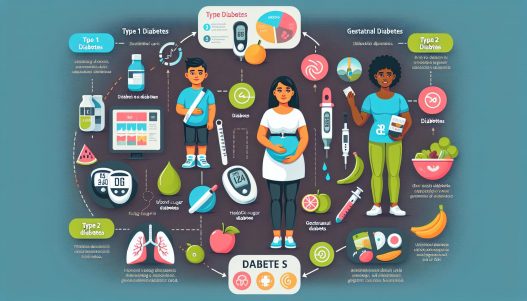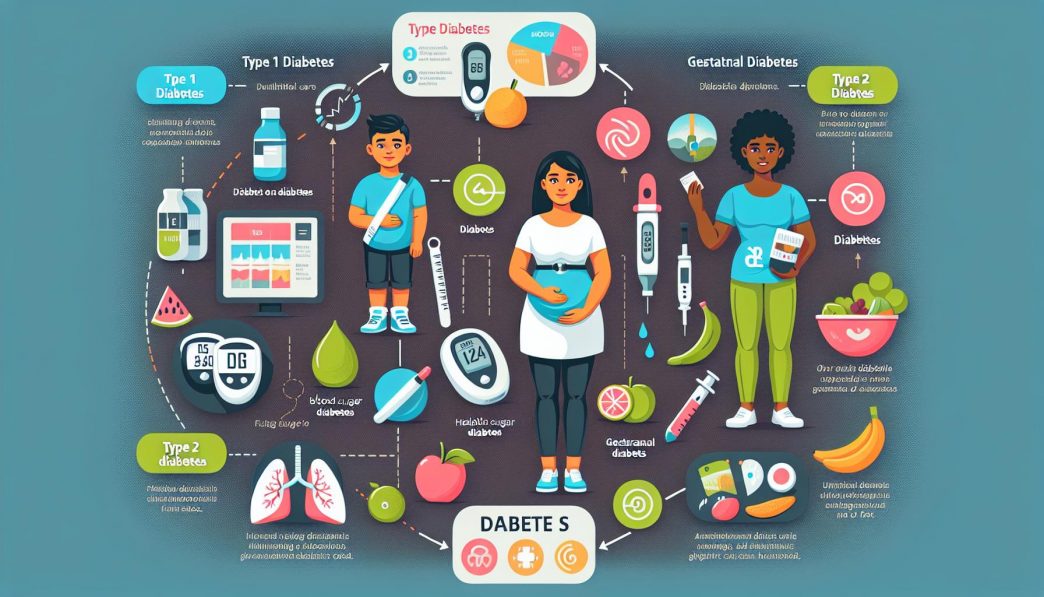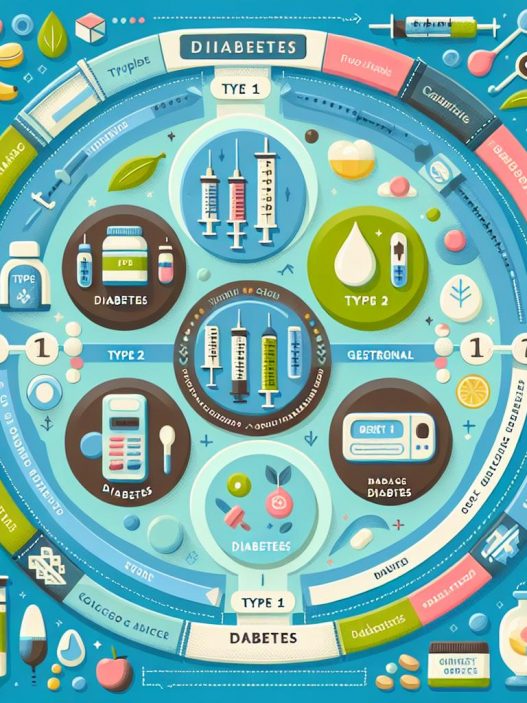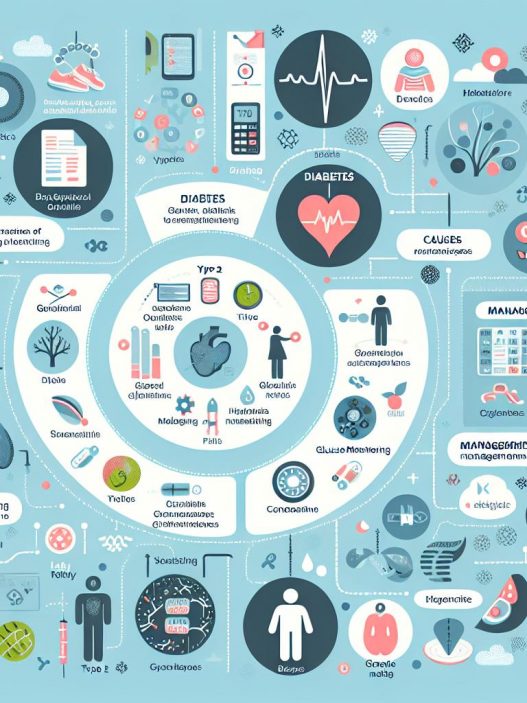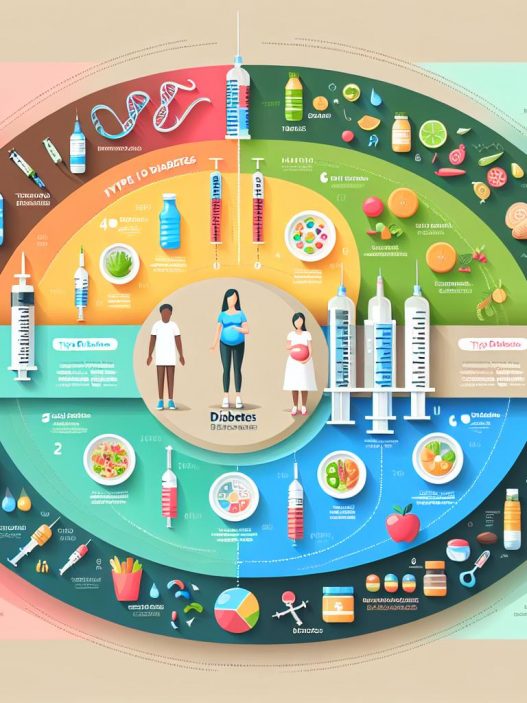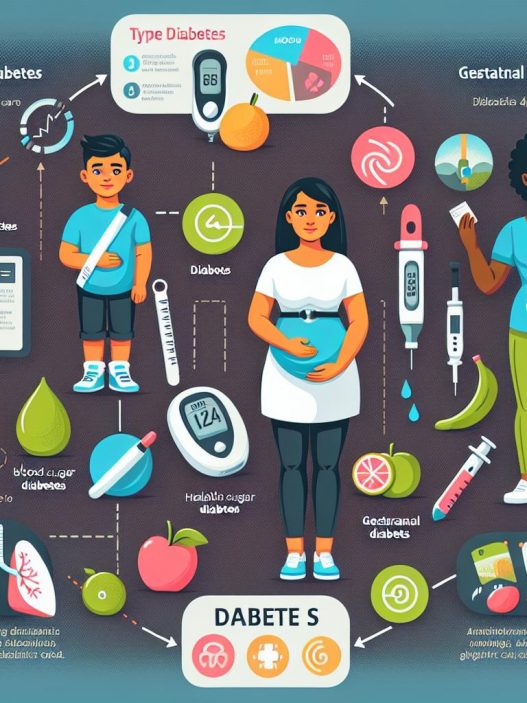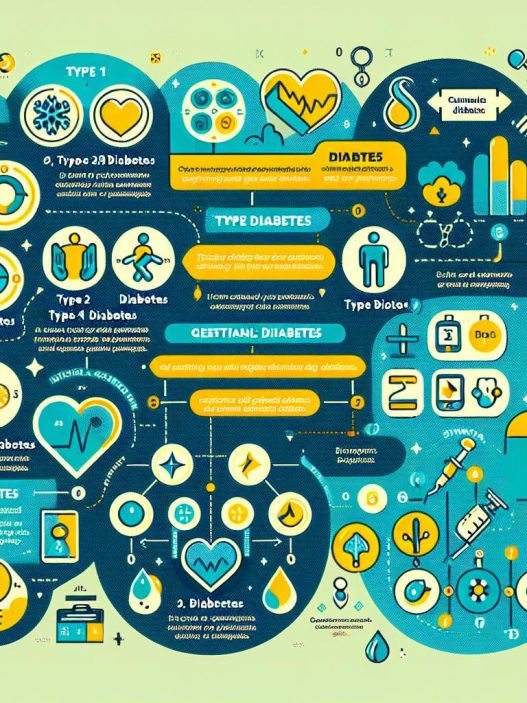# Understanding the Spectrum of Diabetes: From Type 1 to Gestational and Beyond
Diabetes is a complex group of diseases characterized by high blood sugar levels due to insulin resistance, insufficient insulin production, or both. With millions affected worldwide, understanding diabetes is essential for effective management and prevention. This comprehensive guide sheds light on the different types of diabetes, including Type 1, Type 2, prediabetes, gestational diabetes, and other less common forms. Through this article, you will gain valuable insight into the spectrum of diabetes, its symptoms, risk factors, and treatment options.
Understanding Type 1 Diabetes: Causes, Symptoms, and Management
Type 1 diabetes is an autoimmune disease that typically manifests in childhood or adolescence, though it can occur at any age. It arises when the body’s immune system mistakenly attacks and destroys insulin-producing beta cells in the pancreas. Consequently, those with Type 1 diabetes require lifelong insulin therapy to regulate blood sugar levels. Symptoms often include excessive thirst, frequent urination, extreme hunger, weight loss, fatigue, and blurred vision. Early detection and management are crucial to prevent severe complications.
Management of Type 1 diabetes necessitates a comprehensive approach that includes regular blood sugar monitoring, adhering to an insulin regimen, and following a balanced diet. The use of continuous glucose monitors (CGMs) has revolutionized diabetes care for many. These devices provide real-time blood glucose readings, helping individuals make informed decisions about their diets and insulin administration. Furthermore, managing stress and maintaining regular physical activity are crucial components of successfully managing Type 1 diabetes.
The Global Epidemic of Type 2 Diabetes: Factors and Prevention
Type 2 diabetes, the most prevalent form of diabetes, accounts for about 90-95% of all cases. Unlike Type 1, Type 2 diabetes is often associated with lifestyle factors, such as poor diet, inactivity, and obesity. It usually develops gradually and is characterized by insulin resistance, where the body’s cells no longer respond effectively to insulin. Initial symptoms may be subtle and include fatigue, increased thirst, blurred vision, and slow-healing sores.
The rising incidence of Type 2 diabetes can be attributed to several factors, including genetic predisposition and environmental influences. Urbanization, diet alterations, and sedentary lifestyles contribute significantly to the growing prevalence of this condition. Preventive strategies emphasize lifestyle changes, such as adopting a balanced diet rich in whole grains, fruits, and vegetables, along with regular physical activity. Weight management plays a vital role, as even modest weight loss can significantly improve insulin sensitivity and reduce the risk of developing Type 2 diabetes.
In addition, certain interventions can help delay or prevent the onset of Type 2 diabetes, especially in at-risk populations. Programs focusing on lifestyle education, promoting physical activity, and encouraging healthier eating habits have shown positive outcomes. Healthcare providers often recommend routine screening for prediabetes to identify individuals at risk and implement early intervention strategies, making lifestyle modifications easier and more effective.
Prediabetes: Identifying the Warning Signs and Making Changes
Prediabetes is a condition characterized by elevated blood sugar levels that do not meet the criteria for Type 2 diabetes. Individuals with prediabetes often experience no obvious symptoms, making it essential to undergo regular screenings, especially if they have risk factors such as obesity, a sedentary lifestyle, or a family history of diabetes. Understanding the implications of prediabetes is crucial, as it can lead to Type 2 diabetes if not managed appropriately.
Interventions for managing prediabetes focus on lifestyle modifications, such as increasing physical activity and improving dietary habits. Research has demonstrated that individuals can significantly reduce their risk of developing Type 2 diabetes by maintaining a weight loss of 5-7% and engaging in at least 150 minutes of moderate exercise per week. Programs that provide personalized support and guidance, particularly those offered by healthcare providers or community initiatives, are vital for sustained lifestyle changes.
Regular monitoring of blood sugar levels and managing other health conditions, such as hypertension and high cholesterol, are essential strategies for those with prediabetes. Individuals should also consider enrolling in diabetes education programs to gain knowledge and skills on effective diabetes management. Empowering individuals with the right resources and clinicians’ support can greatly improve their outcomes and quality of life.
Gestational Diabetes: Risks, Symptoms, and Management Strategies
Gestational diabetes is a form of diabetes that occurs during pregnancy, typically affecting about 2-10% of pregnant women. Hormonal changes during pregnancy can lead to insulin resistance, necessitating increased insulin production. If the pancreas cannot produce enough insulin to support these changes, blood sugar levels rise, resulting in gestational diabetes. Symptoms may be absent, so screening is typically performed in the second trimester.
Untreated gestational diabetes poses risks to both the mother and baby, including excessive birth weight, premature birth, and higher chances of developing Type 2 diabetes later in life. Management of gestational diabetes primarily involves dietary changes, regular blood glucose monitoring, and physical activity. Women are often encouraged to follow a balanced diet that controls carbohydrates and includes plenty of fruits, vegetables, and lean proteins, all while practicing portion control.
In some cases, insulin therapy may be required to maintain optimal blood sugar levels. Women diagnosed with gestational diabetes should remain vigilant and attend regular check-ups to monitor the pregnancy’s progress. Postpartum follow-up is also critical, as studies indicate that women who have had gestational diabetes are at increased risk for Type 2 diabetes. Therefore, ongoing lifestyle modifications and monitoring can help prevent future complications.
Other Types of Diabetes: Exploring LADA, MODY, and Secondary Diabetes
Aside from the more commonly known types of diabetes, there are less common forms worth highlighting. Latent Autoimmune Diabetes in Adults (LADA) is sometimes referred to as Type 1.5 diabetes, as it shares features of both Type 1 and Type 2 diabetes. LADA typically develops in adults and progresses more slowly than Type 1 diabetes. Like Type 1, LADA involves an autoimmune attack on the insulin-producing cells but also displays features of insulin resistance more commonly associated with Type 2 diabetes. Early diagnosis and treatment are crucial, as individuals often require insulin therapy sooner than they might expect.
Maturity-Onset Diabetes of the Young (MODY) is another genetic form of diabetes, resulting from a change in a single gene affecting insulin production. MODY often goes undiagnosed due to its relatively rare occurrence and varied presentation, which can mimic Type 1 or Type 2 diabetes. Unlike Type 2, MODY typically emerges before the age of 25, and individuals may not be overweight. Recognizing MODY’s unique genetic component allows for tailored treatment strategies and preventing the use of inappropriate therapies.
Secondary diabetes refers to cases where diabetes arises due to other medical conditions, such as hormonal disorders like Cushing’s syndrome or as a result of medications, such as glucocorticoids. Understanding the underlying causes of secondary diabetes is crucial for management. Treatment may involve addressing the underlying condition and optimizing blood sugar control through lifestyle interventions and, when necessary, medication.
In addition to these forms, diabetes can also arise from specific genetic syndromes and endocrine disorders. It is essential for healthcare professionals to consider the full spectrum of diabetes to provide accurate diagnosis and personalized treatment plans.
Living with Diabetes: Strategies for Successful Management
Living with diabetes, regardless of type, can present unique challenges. However, successfully managing diabetes involves a multidimensional approach encompassing education, support, lifestyle choices, and medical intervention. The cornerstone of diabetes management lies in understanding how different foods, exercises, and medications affect blood sugar levels. Individuals should work closely with healthcare providers and certified diabetes educators to devise personalized management plans.
Support networks significantly contribute to the success of managing diabetes. Joining diabetes support groups can provide invaluable emotional support and practical advice from others facing similar challenges. Family support is equally crucial; educating family members about diabetes can foster a supportive home environment, allowing those with diabetes to thrive and maintain their health.
Routine medical check-ups and monitoring are essential components of effective diabetes management. Adhering to a regular appointment schedule allows for timely adjustments in medication and lifestyle interventions. Furthermore, maintaining a diabetes management diary helps individuals track blood sugar levels, dietary intake, and exercise routines, fostering accountability and encouraging positive behavior changes.
Technology has increasingly played a pivotal role in diabetes management, from insulin pumps to smartphone apps that track dietary intake and blood sugar levels. These tools empower individuals to take charge of their health and make informed decisions about their care. Thus, embracing technology in daily management may lead to enhanced blood sugar control and overall well-being.
In conclusion, understanding the spectrum of diabetes — from Type 1 to gestational and beyond — is critical for effective management and prevention. As the global incidence of diabetes continues to rise, awareness and education are paramount. By understanding the different types of diabetes, their risk factors, symptoms, and management strategies, individuals can make informed choices and embrace healthier lifestyles. Through ongoing advancements in research, technology, and support, people living with diabetes can achieve better health outcomes and improve their quality of life.










